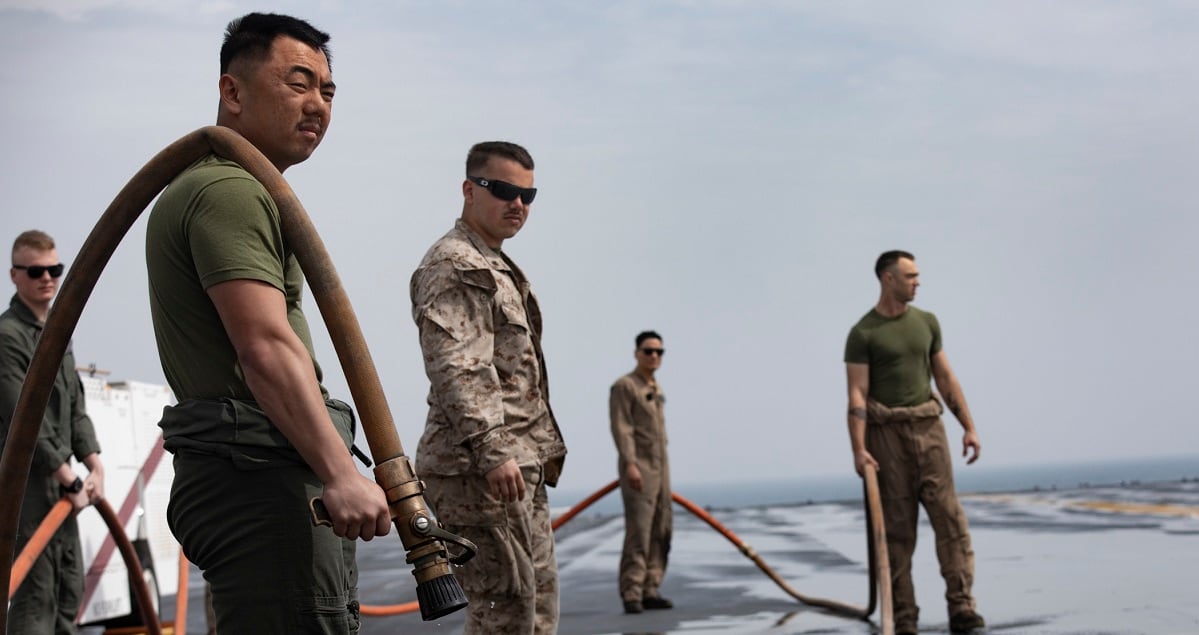Throughout the past 244 years, an aggressive arrogance has become as much a part of a Marine’s uniform as the Eagle, Globe and Anchor.
That aggression has led Marines to success in battles from Guadalcanal in the Solomon Islands, to Fallujah, Iraq, and Marjah, Afghanistan.
But one expert and retired Marine now fears that the aggressive warrior ethos of the Marine Corps has been put at risk by the new force design proposed by Commandant of the Marine Corps Gen. David Berger.
The force design plan has led to the Corps eliminating tanks, a future reduction in traditional tube artillery, along with a restructure of Marine Corps infantry to make it smaller, lighter and more mobile.
“When you look at this new structure the focus is on the aviation and the artillery, not the infantry,” Mark Cancian, a retired Marine officer who now works as a senior adviser for the Center for Strategic & International Studies, said this summer. “The focus of the infantry now, is to protect the artillery a very defensive orientation and I think over time that will become part of the culture."
RELATED

The comments took place during a July 30 webinar titled, “Re-designing the Marine Corps for Future War: Necessity or Madness?” held by conservative leaning think tank The Heritage Foundation.
The aggressive culture of the Marine Corps was born out of the Spanish-American war in 1898 as a way to differentiate the Corps from the Navy, said Heather Venable, an associate professor at the Air Command and Staff College and author of “How the Few Became the Proud,” an early history of the Marine Corps’ mystique.
The Corps “depicted the Navy as in the distance providing support and sailors as cowards when they did participate in combat on land,” Venable told Marine Corps Times in an email.
“So the Corps really begins using imagery that celebrates the offensive, which naturally only increases given its offensive land battles in World War I,” she added.
The culture developed in the early years of the 20th century has survived to present day despite several revisions to the structure of the Corps.
One such force design saw Marines spread throughout the Pacific in “advanced naval bases” ― a concept fairly similar to the expeditionary advanced base operations that play a key role in Berger’s force design plans.
“Its not absent from Marine Corps history to make big adjustments when those adjustments were needed,” Dakota Wood, a retired Marine lieutenant colonel and now senior research fellow at The Heritage Foundation, told Marine Corps Times in a phone call after the event.
Cancian said the change may take decades, but if the force design plan is fully implemented and adhered to slowly and surely over time the Corps will turn into a force led by artillery and air officers with a mindset of protect the artillery, not destroy the enemy.
“What the Marine Corps has provided the nation is excellence in ground combat ... that ethos pervades the institution” and what makes it truly unique among the other branches of the military, Cancian said in a phone call after the event.
The real difference is the training pipeline Marines go to compared to Army counterparts, said Jonathan Welch, a senior policy analyst for Rand Corp.
“The Army and the Marine Corps are recruiting the same people,” he told Marine Corps Times in a phone call.
“The training is definitely different and that is part of what breaks out the differences in the service members once they are brought through the training pipeline,” he added.
Wood dismissed the idea that the warrior ethos in the Marine Corps was at threat under the new force design, pointing out the Marine Corps will still have a role as America’s crisis response force.
He added that even within their role in a littoral war against China the Corps would almost certainly face hard combat.
“A confident Marine who is able to employ a variety of tools, one of which is a service rifle, but what about a naval strike missile, what about combat aviation or deploying unmanned systems inside the enemy’s weapons engagement zone?” Wood asked.
“That takes some steely eyed killers,” he added.





